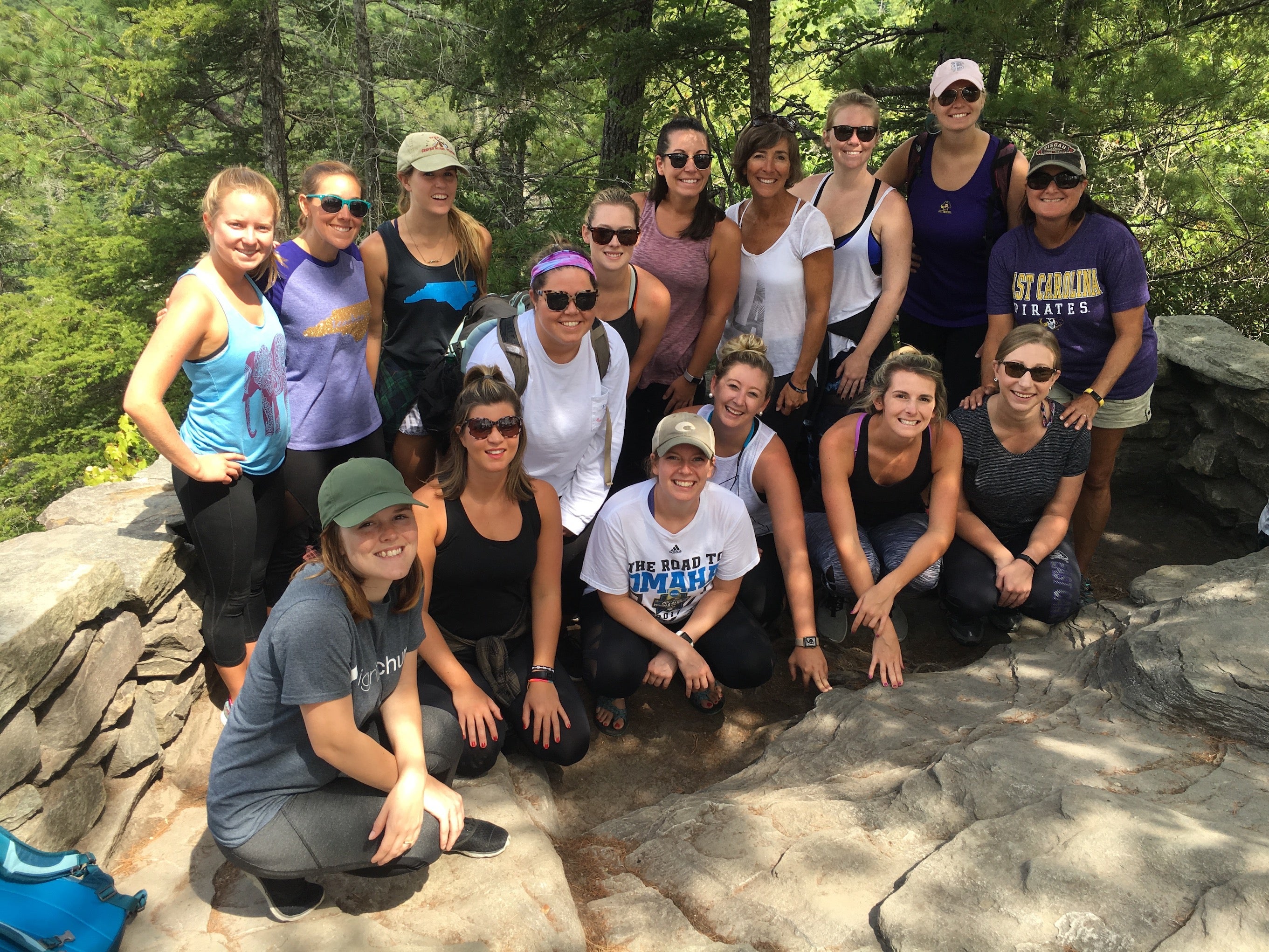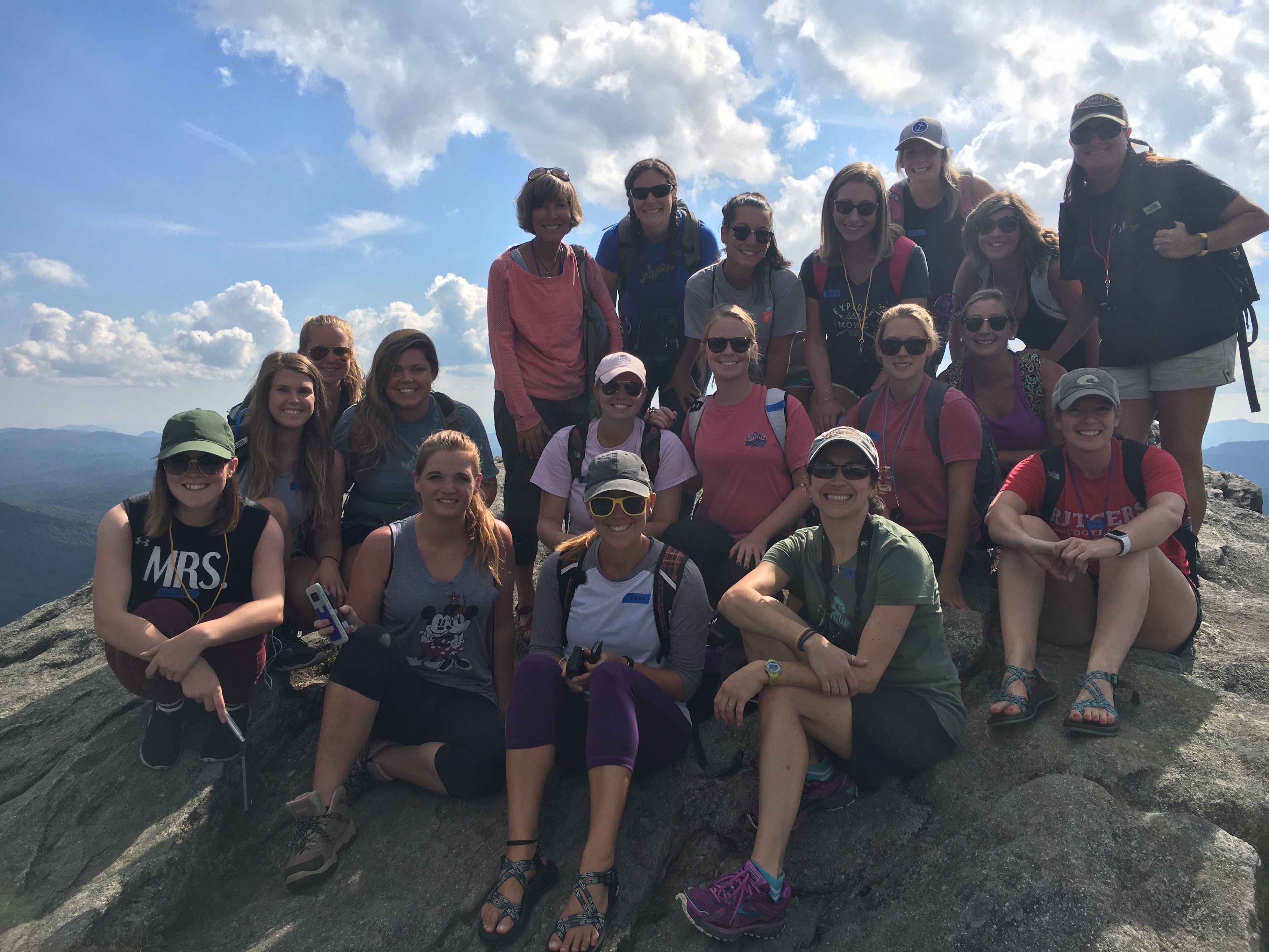Dr. Tammy Lee replies to questions about Science and Science Education.
1. Do you have a favorite field of study within science?
My favorite field of study is learning about our natural world. Understanding our natural world involves all fields of science (physics, biology, chemistry, and earth science). We, human beings, have divided the sciences into separate fields for the purpose of study, but to understand the natural world, all the sciences collectively shape our understanding.
2. What are your favorite places on earth? What makes them special?
I have many favorite places on earth. It is hard to choose. I love nature and being outside. My family and I go camping all through the year. We love visiting different state and national parks. I think it is very important to save natural areas to preserve them for exploration in future generations and to appreciate them. One of my favorite places to visit is our North Carolina Mountains. Whenever I am in the mountains, I like to hike to a flowing stream, find a huge rock, sit and enjoy the sounds of rushing water, watching whirligig beetles, and dragonfly larva swim by me. AWWWW perfect.
3. What are your favorite places to contemplate beyond earth?
I like earth. I have not thought about going beyond it. I think space travel is extremely interesting and we have benefited in so many ways from traveling to space. But I do not have an interest in adventuring beyond our planet.
Do you believe that one day you will travel beyond earth’s atmosphere? No.
4. Do you regard ecosystems as fragile? Why or why not?
Ecosystems are ever changing. Ecosystems are constantly changing due to natural and manmade influences. As one example, this past summer, I took a group of beginning teachers (ECU alumni) to the NC Mountains to study the ecological area of Mount Mitchell. At 6,684 feet, Mount Mitchell is the highest point east of the Mississippi. At the top of Mt Mitchell is the natural habitat of the evergreen Frasier fir. What most people recognize as a “Christmas Tree.” The mature Frasier Firs have been almost completely killed off by a non-native insect called the Balsam woolly adelgid. Since these insects are invasive the Frasier Fir have not evolved a defense to them. Also, the high elevations of Mt Mitchell have exposed the Frasier Fir and other plant life to air pollution in the form of acid rain, snow, and fog as a result of coal industries in the area. The attack of the invasive species of the adelgid and pollution from coal plants are just two examples of how natural and manmade influences are changing the high elevation ecosystem of the NC Mountains. The pollution problem is improving due to regulations that have been put in place. Trying to find a solution to the invasive species problem is complex and may not be solved. But over time the changes will result in a transformed ecosystem with hopefully, something just as beautiful as the Frasier Fir.
5. With respect to science education, what was the purpose of your doctoral dissertation?
My dissertation focused on two areas. The first part of my dissertation focused on elementary in-service and pre-service teachers’ knowledge of systems thinking within the context of the water cycle. Systems thinking is a way of thinking about systems such as the water cycle or ecosystems which focuses on the interactions and relationships that occur within and among the systems. The water cycle, ecosystems, and moon phases are examples of systems that are a part of national and state elementary science curricula. The second part of my dissertation focused on selecting and using visual models to teach with a systems thinking approach. My research questions were centered around what visual models would elementary in-service and pre-service teachers select when teaching about the water cycle and then how they would use them in a lesson.
What methods did you use in seeking to attain the goals of the work?
I used a mixed methods approach that involved content knowledge tests, surveys, a card-sort task, and interviews.
What conclusions did you draw and what are their implications for science education?
I found that teachers had difficulty applying systems thinking skills within the context of a specific system (water cycle). The implications could result in a lack of complexity in instruction when teaching about natural and manmade systems in science curricula. To help with this issue, we have implemented a systems thinking approach in our content courses of the Elementary Science Concentration (ESC). My research start up grant is also focused on working with ESC alumni on creating ecological systems thinking units.
I also found that when teachers select diagrams to teach the water cycle, their discussion of how to use diagrams in instruction tends to be more teacher centered, but when photographs are selected, teachers discuss using a more student-centered approach. The implications of these findings are important because elementary school teachers act in the role of instructional designers. Again, to help address this concern in our teacher preparation courses, we have implemented assignments in which students select and use visual and physical models to promote science discourse. Also, within my research start up grant, we are working on creating virtual field trips based on field experiences in the NC Mountains.
6. What do you hope graduates of science education programs at ECU will accomplish?
When we started the Elementary Science Concentration (ESC) we hoped to create an army of elementary school teachers that had a passion and love for science and science teaching. This passion would motivate them to become leaders in science for their schools and in the future for their districts, state, and the nation. I have been lucky enough to continue working with many of the graduates from the ESC over the past few years. During this time I have seen them grow as science teachers and become leaders in science at each level.
As a science educator, what knowledge, skills, and attitudes are you helping students acquire, which will help them accomplish those goals?
Teaching elementary science involves acquisition of specialized knowledge and skills, which our students gain in a supportive environment that allows students to develop a curiosity about the world around them. I believe content knowledge is important for teaching elementary science, but more importantly, you must have an interest and passion for the subject.
7. What STEM and science education projects are you pursuing today?
Currently, I am working on several projects. We have been investigating how to increase pre-service teachers’ science discourse when using modeling in science instruction. We are also working on creating virtual reality field trips based on our field experience in the NC Mountains and this upcoming summer we are offering our first study abroad graduate course in Costa Rica. This course is focused on using a systems thinking approach to teaching about climate change.
In the mountains, among friends, students, and Frasier Firs.


